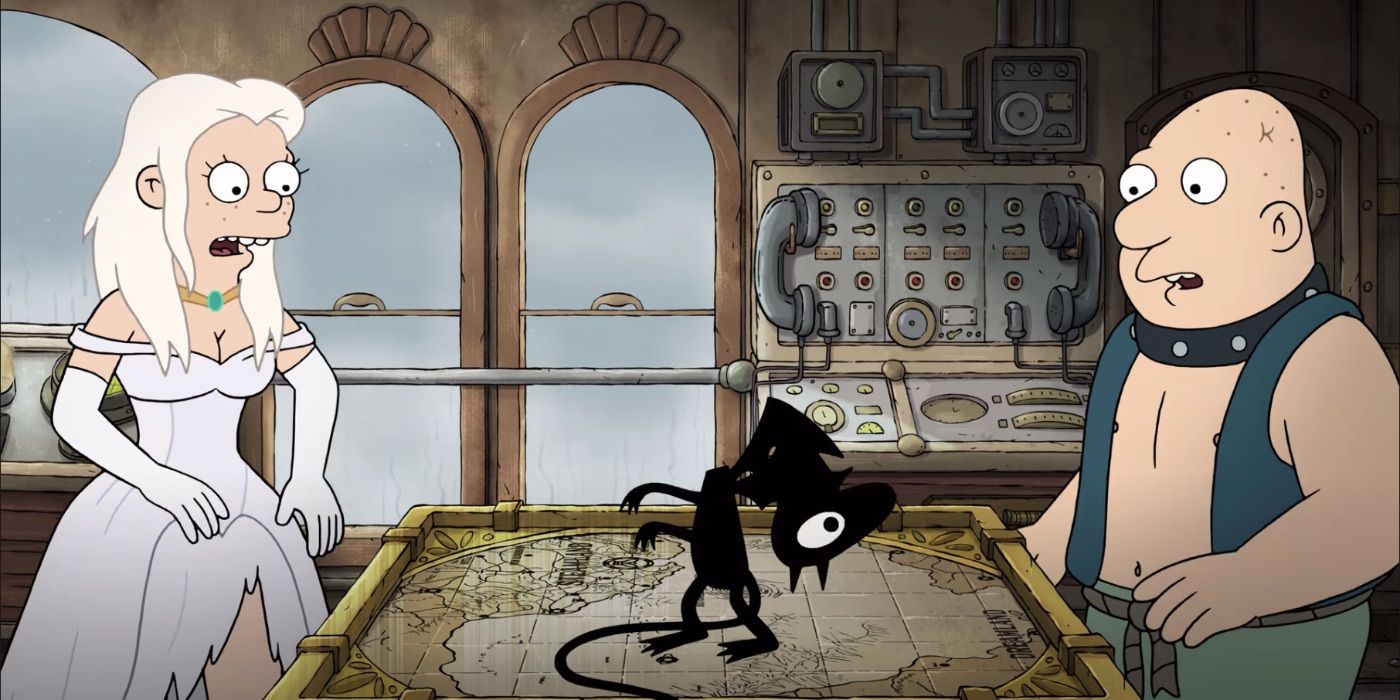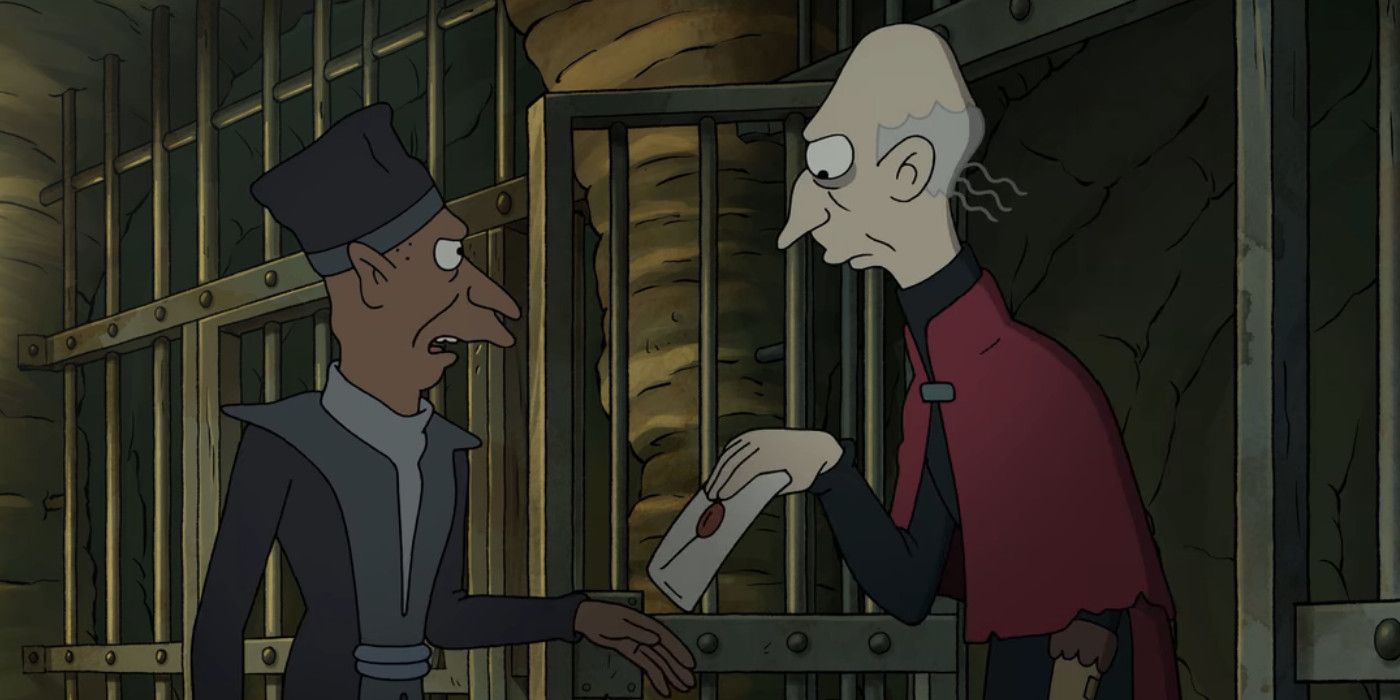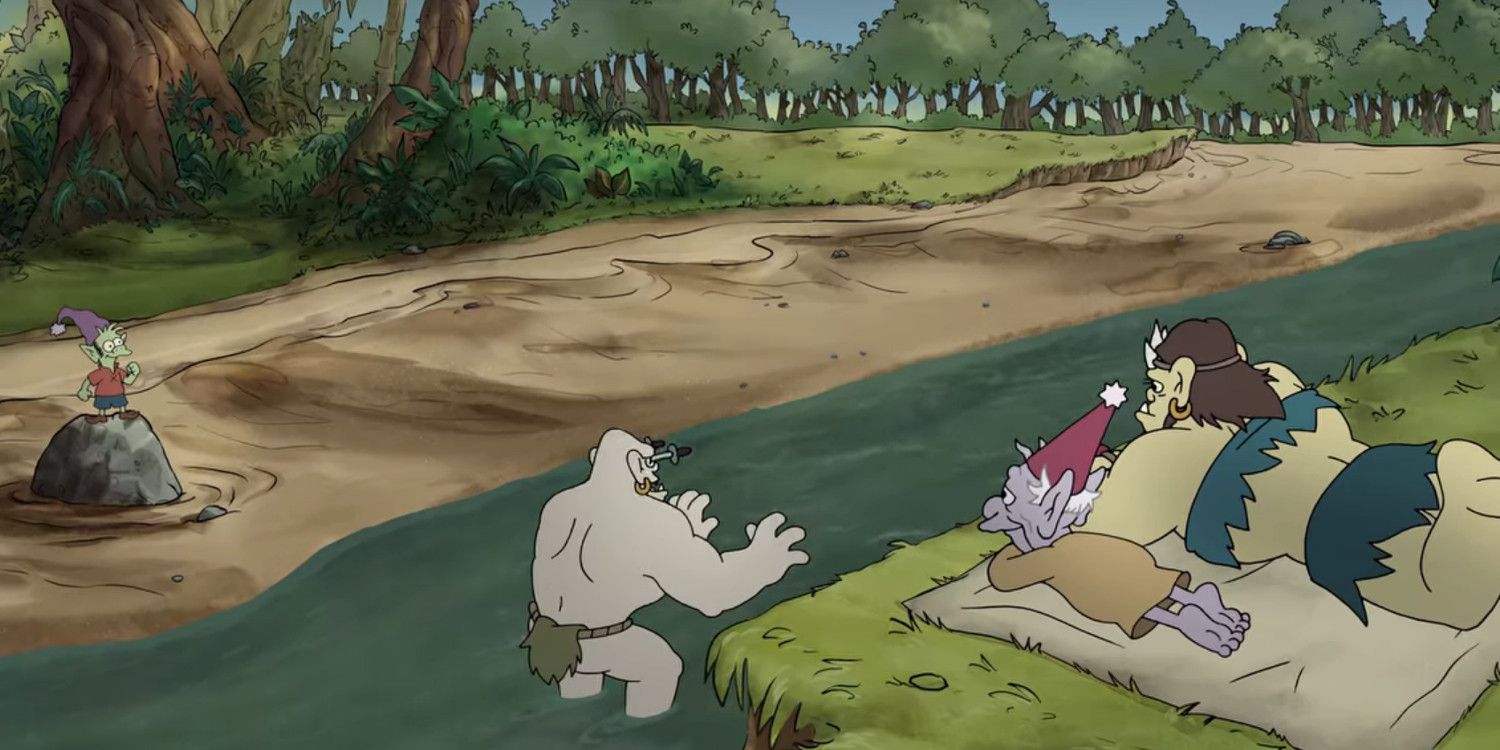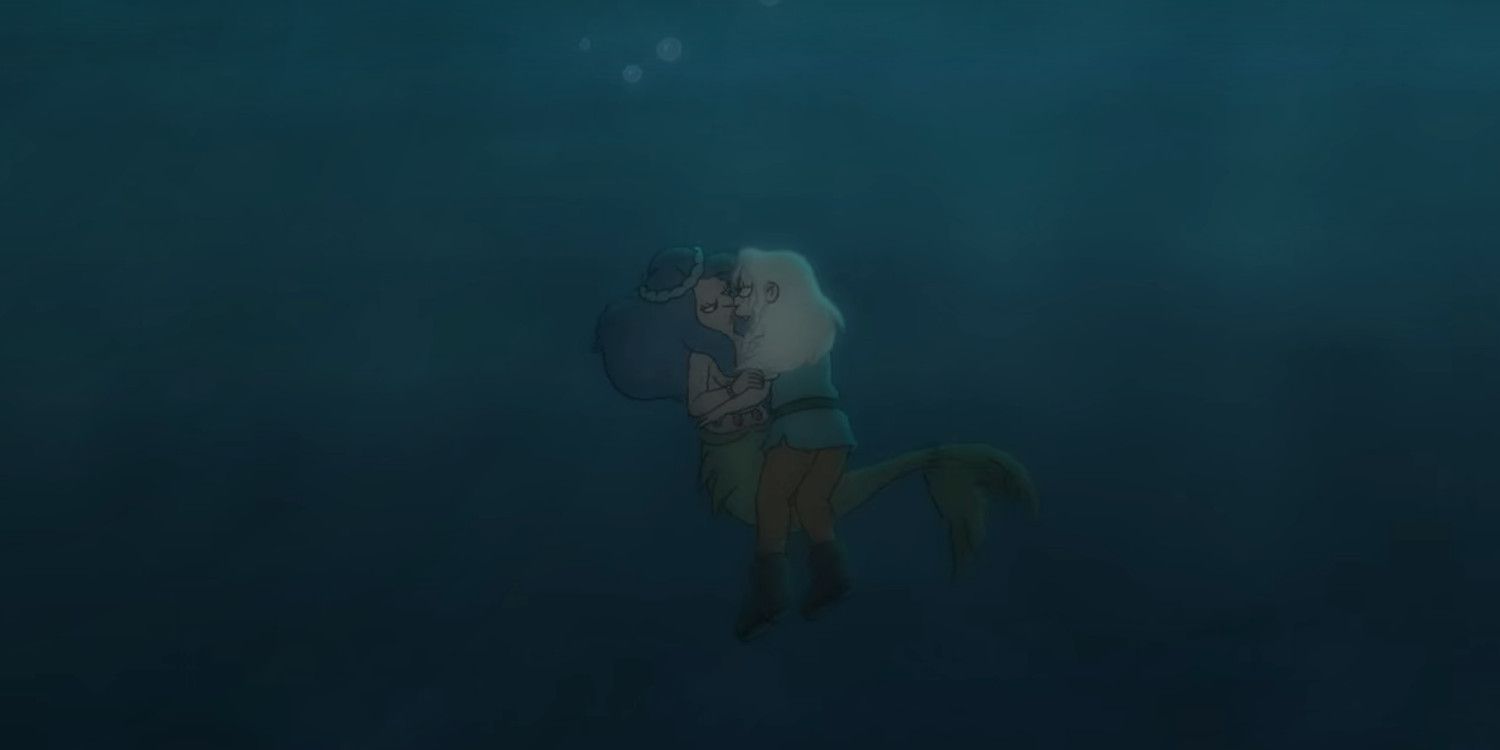Warning! SPOILERS for Disenchantment Season 4.
Disenchantment season 4 was disappointing to many fans of the Netlix animated series, mainly due to how the show failed to develop its many subplots. The fantasy satire suffers from being more tightly-plotted that Matt Groening’s earlier animated endeavors, making it harder for audiences to become absorbed in its dense mythology. This, coupled with a slower pacing, has prevented the series from developing the widespread popularity of Futurama and The Simpsons.
Premiering on February 9, 2022, Disenchantment season 4’s release went relatively unnoticed. The finale of The Book of Boba Fett, which was released on the same day, instead dominated social media. Even dedicated fans of Disenchantment spent the day debating the simultaneous announcement of a new season of Futurama on Hulu without beloved voice actor John DiMaggio in the role of Bender. Ironically, the new season of the series by the same creators, where DiMaggio voices King Zøg, was largely ignored amidst the discussion of the scandal.
Disenchantment has yet to be confirmed for season 5, despite the season finale ending with multiple cliffhangers and the fate of Dreamland (and perhaps the world) left in the balance. However, given the lackluster response from fans online in the wake of the release of Disenchantment season 4 and their complaints about how the ongoing storyline progressed, it seems likely that few would be upset if the series joined the long list of other series Netflix cancelled with their stories unfinished.
Disenchantment Is Utterly Dependent On Its Plot

The chief reason Disenchantment has not achieved the popularity of Futurama and The Simpsons is due to its stricter structure and intensive plot. Disenchantment enjoys a storyline involving dozens of characters and multiple subplots that tie into its unique setting. This stands in marked contrast to Matt Groening’s earlier series, which were more episodic in nature and could be enjoyed by anyone who stumbled across them while channel-surfing.
This is to be expected, given that Disenchantment was designed to fit the binging habits of modern viewers. With the series exclusively on Netflix, the writers have every right to expect the audience to have sought out the series intentionally, which grants them the ability go into greater detail with their scripts. This focus has proven a double-edged sword, however, as Disenchantment‘s tightly woven storyline did not appeal to those fans who expected the show to merely reference fantasy series like Game of Thrones in the same way that Futurama parodied Star Trek and other classic science fiction. Instead, Disenchantment has developed a setting as complex as Westeros, with a story that requires viewers watch all the episodes in order to keep track of all the characters and their actions.
Most Of The On-Going Subplots Weren’t Explored

Unfortunately, Disenchantment season 4 was viewed as largely uninspired even among those fans who found this new approach appealing, due to the failure of most of the on-going storylines to advance in any meaningful fashion. It took almost half the season to resolve all the cliffhangers from the Disenchantment season 3 finale. This left precious little time for developing all the subplots before a new series of cliffhangers were set up for the Disenchantment season 4 finale.
One prime example of this was the storyline involving the Secret Society organized by several sinister figures, including Prime Minister Odval and the exorcist Big Jo. Disenchantment season 3’s finale revealed that the Secret Society was seeking information on breaking a magical curse that plagued the Royal Family of Dreamland. Big Jo was sidelined early on in Disenchantment season 4 while trying to assassinate King Zøg and Odval barely appeared until the finale, where he was captured while trying to help King Zøg find his missing sons and forced to join a freak show in Steamland. While the larger mystery of the curse and the ancient enemy responsible were explored elsewhere, the whole Secret Society arc seemed like pointless filler in retrospect, given how little Odval and Big Jo were involved in the storyline of Disenchantment season 4.
The Subplots That Were Resolved Were Completely Pointless

While most of Disenchantment‘s running subplots spent season 4 spinning their wheels and not moving forward, some were resolved in a way that proved them to be utterly inconsequential to the larger storyline and invited comparison to the weaker recent seasons of The Simpsons. Perhaps the best example of this is the story of Elfo’s parentage, which was finally confirmed in Disenchantment season 4, episode 2, “The Good, the Bad, and the Bum-Bum.” After being abducted by ogres in the Disenchantment season 3 finale, Elfo was taken to the Ogre Queen and revealed to be her long lost son, the product of her first romance with Elfo’s father.
While this confirmed the fan theory that Elfo was half-elf and half-ogre, the story ended anti-climactically and Elfo’s happy reunion was ruined by Bean and Luci “rescuing” him. Strangely enough, Elfo didn’t make any effort to return to the family he’d long wished for, despite there being no reason for him to return to Dreamland apart from his crush on Bean, which has come and gone as the plot demanded. This erratic characterization is another reason Disenchantment has failed to develop the following of Futurama.
Too Many Deus Ex Machinas

Perhaps the greatest flaw of Disenchantment season 4 was its dependence on coincidence and deus ex machinas resolving the cliffhangers. This robbed the series of much of its drama, which is problematic given the series’ more serious tone and complex story. The best example of this came in “Bean Falls Apart,” the finale of Disenchantment season 4, which ended with Bean seemingly falling to her death in the waters under Dreamland Castle. The episode’s ending subsequently revealed Bean to be alive, having been rescued by the mermaid princess Mora, whose magic was able to help mortals breath underwater. While the moment affirmed the romance between the two princesses, who were implied to have shared a night of passion in one of Disenchantment season 3’s most mysterious scenes, it was hardly surprising since Mora had already done the same thing earlier in the season when Bean was in danger of drowning in Disenchantment season 4, episode 6, “What to Expect When You’re Expecting Parasites.” This undercut any further sense of peril from Bean being endangered in the ocean, given it was made clear that Mora was still watching over Bean following their night of passion. While this adds an interesting wrinkle to a potential Disenchantment season 5, it may be too little, too late, given the fading enthusiasm of the series’ fans.




